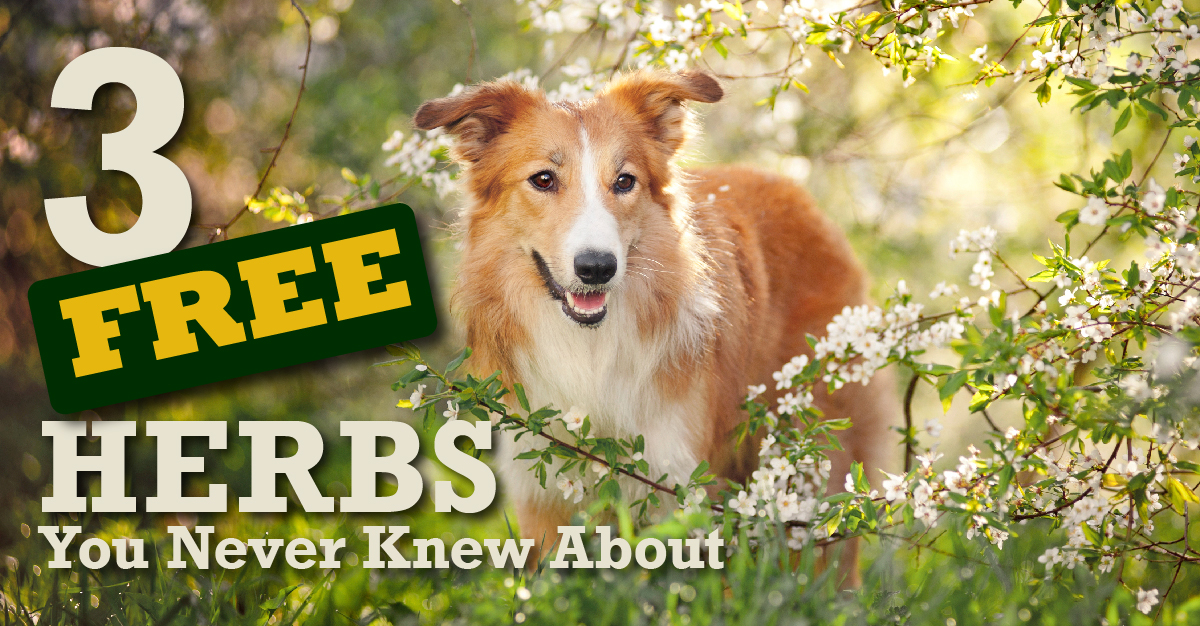Many ‘herbs’ we totally overlook, instead, these poor cousins of herbs we know get branded as mere weeds!
However much what can be found on your walks can be useful little additions to a great diet and have been used for centuries to help common issues. So instead of walking all over them, next time you might wish to use these 3 wonderful herbs.
It can make bowls a little more interesting as well as the additional health benefits associated with them such as relieving your pet if he/she struggles with seasonal allergies or skin issues.
Once herbs have been dried store them in airtight containers away from sunlight.
Important Notes:
- As with any herbs do not use them with pets who are pregnant or taking medications, as however innocent just because something is natural does not mean it has no potency and in the case of medications, interactions can occur.
- When picking weeds always stay clear of roadsides or areas where pesticides have been used.
- Also, avoid pee places.
- Consider local wildlife and leave some for the other animals in the neighbourhood.
- Do not pick a plant to feed to your pet if you are unsure about what it is.
Stinging Nettle
How to identify:
they are hard to miss, as they do sting… badly!
You can use the roots, stem and leaves.
The goodness…
Nettle contains vitamins A, C, K, B, calcium, phosphorus, iron, magnesium, and potassium.
This weed has a high iron content making it very good for pets who are anaemic.
Nettle supports the liver, glands and nervous system and is a real cleanser of the body. Because of its diuretic qualities, it is often used for bladder and kidney problems, including stones and urinary tract issues.
Nettle also contains histamine, which can help with arthritis and allergies.
Furthermore, this also helps pets who struggle with skin conditions which cause itchiness.
How to use…
- Dried is best to add to food, just need to sprinkle!
- For cats, a third of a teaspoon dried
- For dogs half a teaspoon for every 400gr of food
- As a tea – if you have an itchy pet, however, consider a nettle tea body rinse.
How to harvest…
Wear rubber gloves. Pick young plants- the nettles which not have flowered yet. You need plenty so bring a carrier bag
To dry hang the nettle upside down, with the roots pointing upwards in a dry, dark place until they are crispy. Once crispy and the sting is gone and you can scrunch them up with your hands.
Dandelion Leaves
How to identify:
Bright yellow flowers and broad cerated leaves
The goodness…
Dandelion is quite magical; it’s one of the most complete plants on the planet. This is a powerhouse of nutritional might containing Vit A, C, K, D and B complex, iron, manganese, phosphorus and many other trace minerals; and an especially rich source of potassium.
Dandelion leaves can greatly aid digestion.
Dandelion is a liver booster and is great for the overall immune system due to its antioxidant properties.
Finally because of its diuretic properties dandelion has long been used for treating arthritis, kidney stones, gallbladder disease and congestive heart failure.
How to use…
A teaspoon of dried herb per 10kg of weight
How to harvest…
Make sure the plants are clean, try and pick the leaves in dry weather, avoid washing the leaves, just shake them about a bit to remove any sand or soil. Pop the leaves on some newspaper in a dark and dry place turning them every now and then until they are totally crispy and dry.
Cleavers
How to identify:
This plant has many aliases including Sticky Willies, Velcro Weed, Tangleweed, Sticky Weed – you might get the idea… this weed sticks to anything and everything! Especially hair. Cleavers are a creeper and it looks quite a delicate plant but is surprisingly sturdy especially when it comes to getting it off! But a delicate and mild addition to any diet.
The goodness…
Cleavers cleanse the system, remove toxins from the blood, supports the lymphatic system and urinary tract. This little herb also helps with gastric ulcers and helps drainage of cysts, tumours and inflammation of the upper digestive tract and urinary tract.
Cleavers due to its ability to support the lymphatic system is also associated with skin problems such as eczema, psoriasis, oily and flaky skin.
How to use…
Slightly steam the stem and leaves and use just a little, this is an extremely safe herb to use.
So for a medium dog use a few stems – see picture; a delicious meal of a
duck neck, some Just tripe and Just Offal.





